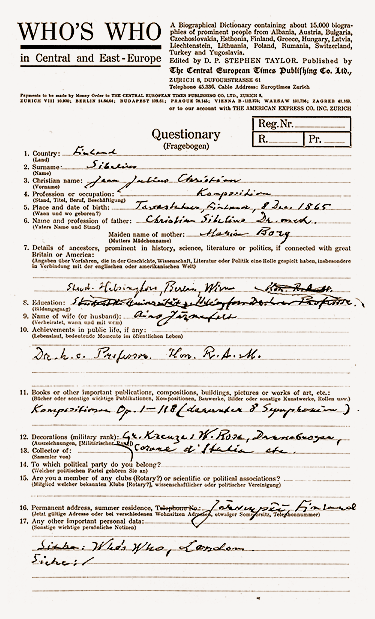During the first ten years of their marriage the Sibeliuses were constantly on the move. As well as living consecutively at five different addresses in Helsinki they spent over three years in Kerava (see Residences). Consequently, not many documents of everyday life have survived from that time. The daughter of the people at Mattila House once recollected that in Kerava, the Sibelius family left behind a laundry basket full of music manuscripts and writings when they moved to Helsinki in the autumn of 1902.
A great number of documents have been preserved from the following two years in Helsinki and the subsequent years in Ainola. In Ainola it was the custom not to throw anything away.
Receipts and similar documents usually contain exact information and dates. They may show the amount of milk consumed at Ainola or the varieties of vegetables which Aino Sibelius grew. From the receipts we know the kind of literature Sibelius read and the hotels he stayed in while travelling in Finland and abroad. We also gain a picture of the composer's economic situation at different times.
A Sibelius document can also be a source of endless speculation. The composer never published his eighth symphony. He apparently burned the manuscript during the 1940s, in the green fireplace at Ainola. Is it possible to determine whether the work was finished completely or only in part? In the early 1930s the composer at least believed that it had been completed, or that it was about to be completed.

Sibelius's concept for a reply to an inquiry from the International Who's Who: "Compositions Op. 1-118 (Including 8 symphonies)."



